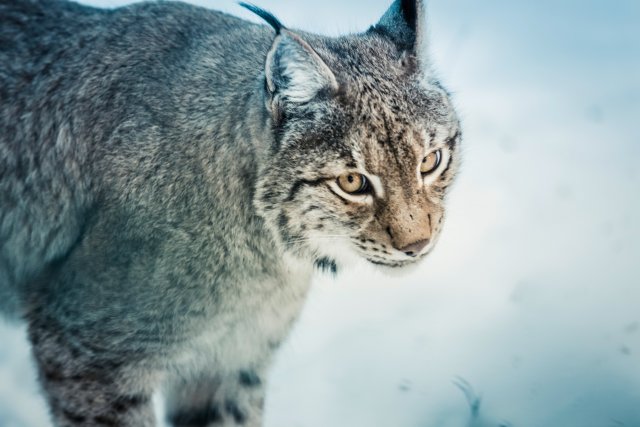The Canadian Lynx: A Closer Look at North America’s Feline Icon
The Canadian Lynx: Discover the Secrets of this Elusive Wildcat
The Canadian Lynx, scientifically known as Lynx canadensis, is a fascinating and elusive wildcat that inhabits the boreal forests of North America. With its distinctive tufted ears, long legs, and beautiful fur, the Canadian Lynx is a captivating creature that has captured the attention of wildlife enthusiasts and researchers alike. In this article, we will delve into the secrets of this elusive wildcat, exploring its habitat, behavior, diet, and conservation status.
The Habitat of the Canadian Lynx
The Canadian Lynx is primarily found in the boreal forests of Canada and Alaska, although it can also be spotted in parts of the northern United States. These forests provide the perfect habitat for the lynx, with their dense vegetation and abundance of prey species. The lynx is well adapted to this environment, with its large paws acting as snowshoes, allowing it to navigate through deep snow with ease.
The Behavior of the Canadian Lynx
The Canadian Lynx is a solitary and secretive animal, making it difficult to study in the wild. However, researchers have managed to uncover some fascinating insights into its behavior. The lynx is primarily nocturnal, meaning it is most active during the night. It is also an excellent climber and swimmer, allowing it to access different parts of its habitat and hunt a variety of prey.
One of the most intriguing aspects of the Canadian Lynx’s behavior is its population cycle, which is closely tied to the abundance of its main prey species, the snowshoe hare. When the hare population is high, the lynx population also increases. However, as the hare population declines, the lynx population follows suit. This cycle is a result of the lynx’s dependence on the snowshoe hare for food.
The Diet of the Canadian Lynx
The Canadian Lynx is a carnivorous predator, with its diet consisting mainly of the snowshoe hare. It is estimated that a lynx needs to consume one to two hares per week to meet its energy requirements. However, when hares are scarce, the lynx will also prey on other small mammals, such as squirrels and mice.
The lynx is an incredibly efficient hunter, using its keen senses of hearing and sight to locate its prey. It then uses its powerful hind legs to pounce on its target, delivering a swift and lethal bite to the neck. The lynx’s hunting success rate is remarkably high, with studies showing that it catches its prey in over 75% of its attempts.
The Conservation Status of the Canadian Lynx
The Canadian Lynx is currently listed as a species of least concern by the International Union for Conservation of Nature (IUCN). However, this does not mean that the lynx is not facing any threats. Habitat loss, caused by logging and urbanization, poses a significant risk to the lynx’s survival. Climate change is also a concern, as it can affect the availability of snow, which is crucial for the lynx’s hunting success.
Efforts are being made to protect the Canadian Lynx and its habitat. Conservation organizations are working to establish protected areas and promote sustainable forestry practices. Research is also being conducted to better understand the lynx’s population dynamics and develop effective conservation strategies.
Summary
The Canadian Lynx is a captivating and elusive wildcat that calls the boreal forests of North America its home. With its unique adaptations, such as its snowshoe-like paws and tufted ears, the lynx is perfectly suited to its habitat. Its behavior, diet, and population dynamics are all intricately linked to the availability of its main prey, the snowshoe hare. While the lynx currently has a conservation status of least concern, it still faces threats from habitat loss and climate change. By understanding the secrets of this elusive wildcat and taking action to protect its habitat, we can ensure the survival of the Canadian Lynx for generations to come.
Read More About Bobcats From Wikipedia




